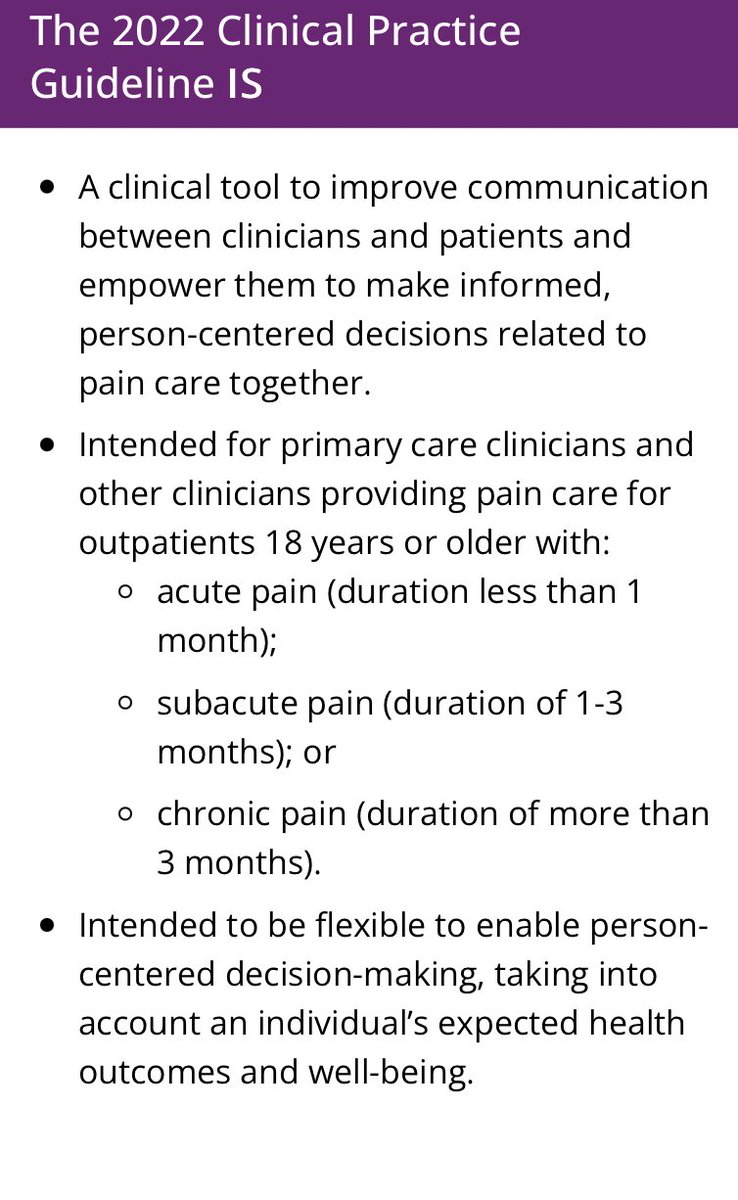
Executive Director: @national_pain https://t.co/8dirShbdJy | Civil rts attorney writing/speaking re: #pain/#opioids/#COVID19 | https://t.co/1E3dCuRcKI | @Harvard @Dartmouth
3 subscribers
How to get URL link on X (Twitter) App


 What Guideline is NOT
What Guideline is NOT 


https://twitter.com/NatlAssnAttysGn/status/1112720124019204101If you need some evidence - see the recent letter sent by three former drug czars and medical experts, covered in the @nytimes and @rollingstone and elsewhere

https://twitter.com/Peter_Grinspoon/status/1109238113698807809Laws in half the states, proposed federal legislation, pharmacy and insurer mandates (which are financially incentivized with compensation packages to lower opioid use) place one-size-fits-all limits on the number of days or dosage at which opioids can be prescribed.